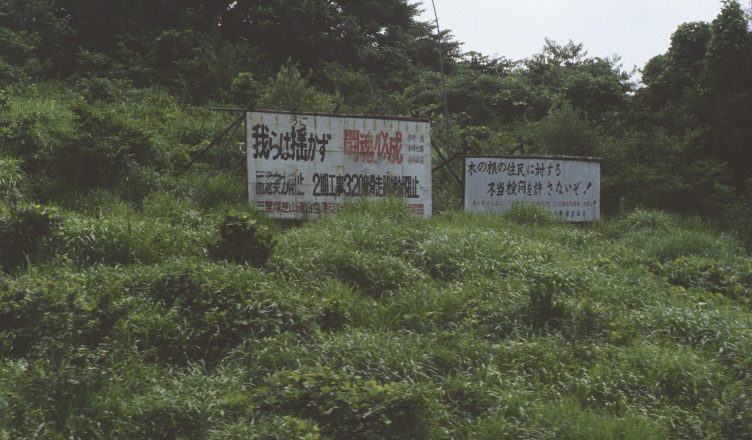The following was offered to the ACG by the comrades of the Union Communiste Libertaire (UCL) of France.
On February 15th , police clashed with farmers and political activists on the outskirts of Narita
International Airport. This followed an eviction order aimed at putting an end to a fifty-year
struggle that has been having a profound impact on Japan’s political landscape.
After a first failed attempt, in 1966 the Japanese government chose to build a brand new
international airport on the farmlands of Sanrizuka, much of which were owned by the imperial
family while the rest of them belonged to very poor farmers—who were supposedly easier to evict.
On the contrary, the harshness of the local peasant condition and the strong community spirit led to
the creation of the Sanrizuka-Shibayama Unified Opposition League, which fought against the
construction of Narita airport with the support of the socialist and communist parties. From August
1966 onwards, the League fought against evictions, whether carried out by money or force.
This struggle took place in a particularly tense national context. Back then, Japan was in the grip of
numerous social struggles, in which powerful student unions called the Zengakuren played a key
role. They were quick to join the struggle, bringing along a number of tactics that would turn the
future airport into a battlefield. Indeed, the refusal to cede property led to an escalation of violence
on both sides. Occupied land was fortified and official assemblies turned into battlegrounds.
The construction of the airport started in the 1970s, and with it, the first deaths among both the
police and the opposition. The airport was completed with great difficulty between 1977 and early
1978, though not without a powerful demonstration and an ultimate ransacking just before its grand
opening.
To understand this struggle, we also need to understand the general context of Japan. Since 1955,
Japan has been a dominant-party democracy, with the Liberal Democratic Party (LDP) forming an
almost untouchable class of bureaucrats whose collusion with private interests is well-documented.
This party, born of Cold War anti-communism, has also been serving as an institutional machine
programmed to recycle fascist figures.
With the United States refusing to ban the Japanese Communist Party for diplomatic reasons, it
gradually put in place a considerable repressive arsenal. The protests, particularly the student
protests, had no choice but to increase their level of action in order to resist an inflexible and brutal
government.
In that regard, the Sanrizuka struggle is symbolic. It brought together vast and intergenerational
political forces during the second half of the period of intense social protest, and even beyond. The
construction of the airport could not be completed properly and its extension works were made
particularly difficult because of the farmers who managed to keep their lands, not to mention the
many acts of sabotage that punctuated the following years.
Therefore, the eviction that took place on February is to be understood in the context of this
ongoing resistance. This resistance put up by activists and locals still has an economic dimension,
blocking airport expansion—but also a symbolic dimension.
At a time when the revolutionary spirit that drove the country has died down, there are few
opportunities to remind people that the alliance between students, workers and peasants still offers
an alternative to the authoritarianism of the LDP. We salute the resistance of our comrades, whose
struggle has been an inspiration to many others.
Corentin (UCL Alsace)

